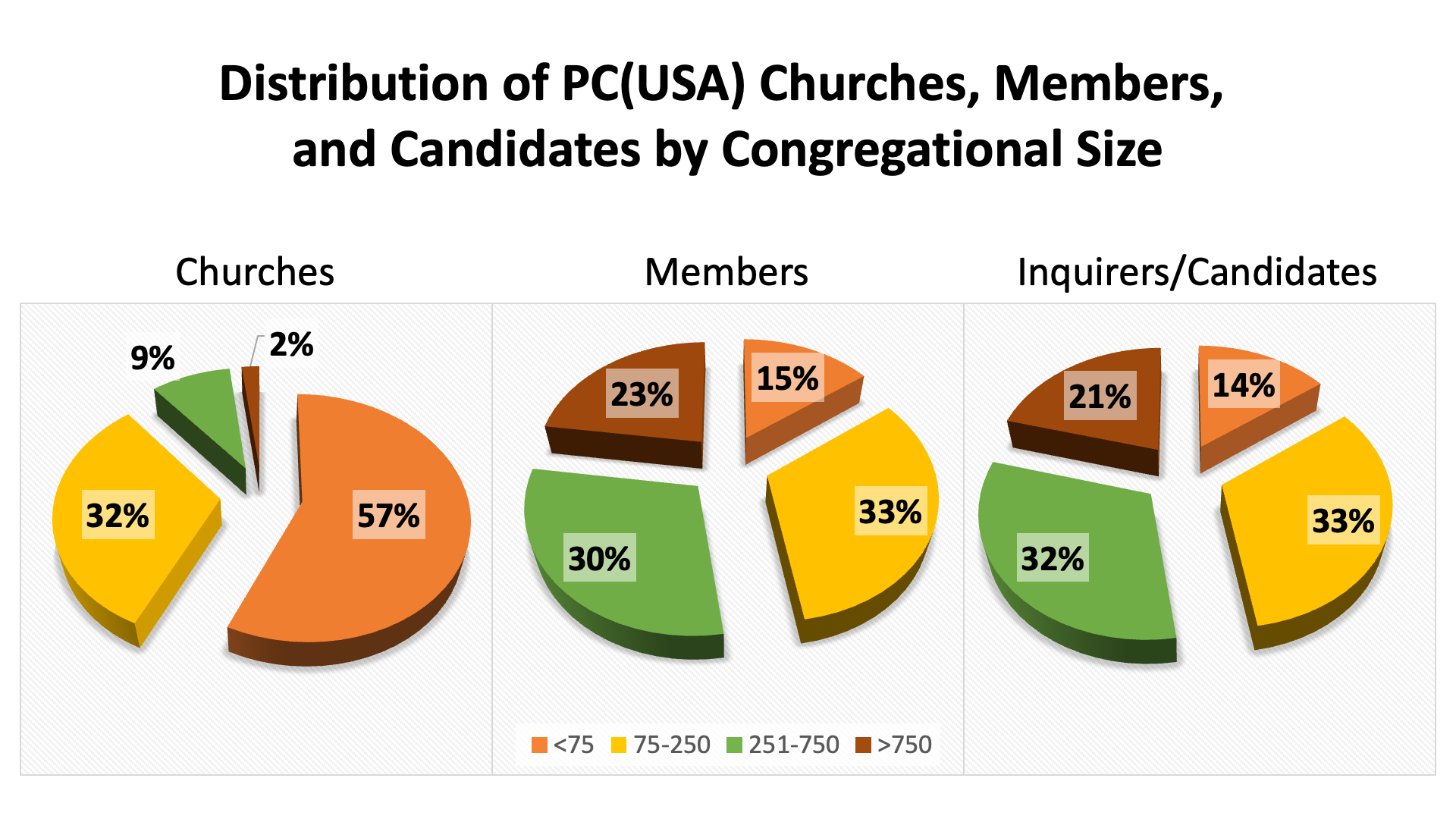From Seminarian to Minister
Information relating to the authorizations necessary to begin searching for a first call, a look at recent trends in finding calls, and some guidance on compensation items that are negotiated in PC(USA) pastoral calls.
Trends
Origins and Destinations
One trend that is important to note is that most candidates moving into first calls are very likely to serve in congregations that are different in size than the congregations of which they were members during their time under care. To appreciate the impact of this development, we can consider one approach to comparing congregational sizes that takes into consideration the differing role of pastors and how the size of the congregation affects the nature of the pastoral relationship.
Briefly stated, this research divides congregations into four groups.
- “Family-Size” churches have up to 75 members and typically average less than 50 in weekly attendance. The pastor’s role in such congregations is often likened to that of a chaplain, because the direction and leadership of the congregation is largely controlled by one or two prominent families.
- “Pastor-Size” churches can have from 75 to 250 members and average up to 150-175 in worship. In these congregations, the pastor’s role is shaped by personal relationship with the members, and the upper limit is set by the number of people with whom it is possible for one individual to truly engage in personal relationship.
- “Program-Size” churches with 250 to 750 members and average attendance of around 500 would be the next grouping. Congregations in this range generally begin to have one or two other staff persons, though they may serve in non-ordained positions. The pastor’s role and duties define most members’ relationship with the pastor.
- “Corporate-Size” congregations have the broadest range in membership, from say 800-900 members to “megachurches” with several thousand members. They have large staffs of ordained and non-ordained persons, each with rather specialized areas of ministry and focus. While members will likely form relationships with staff persons with whom they have regular contact, the ultimate basis for that relationship is the particular pastor’s or associate pastor’s responsibilities within the congregation.
So, how does the congregational experience of our inquirers and candidates relate to the distribution of congregations within the Presbyterian Church (U.S.A.)? Well, as the chart below indicates, they are almost exactly opposite. While almost nine-out-of-ten (89%) of our congregations at year end-2022 were in the “Family” and “Pastor” size categories (fewer than 250 members), over half of our candidates (54%) come from “Program” and “Corporate” size churches (more than 250 members). This distribution of inquirers and candidates really should not be that surprising. The members of the PC(USA) have about the same distribution across these congregational-size categories as our inquirers and candidates.

When seeking a first call, then, candidates are more likely to find a call if they are open to serving in congregations in a range of sizes and a variety of locations. Limiting oneself only to those places that "feel like home" will greatly reduce opportunities for ministry.